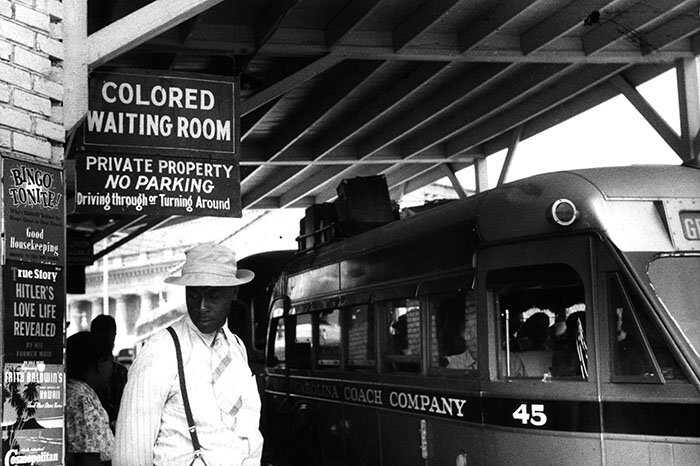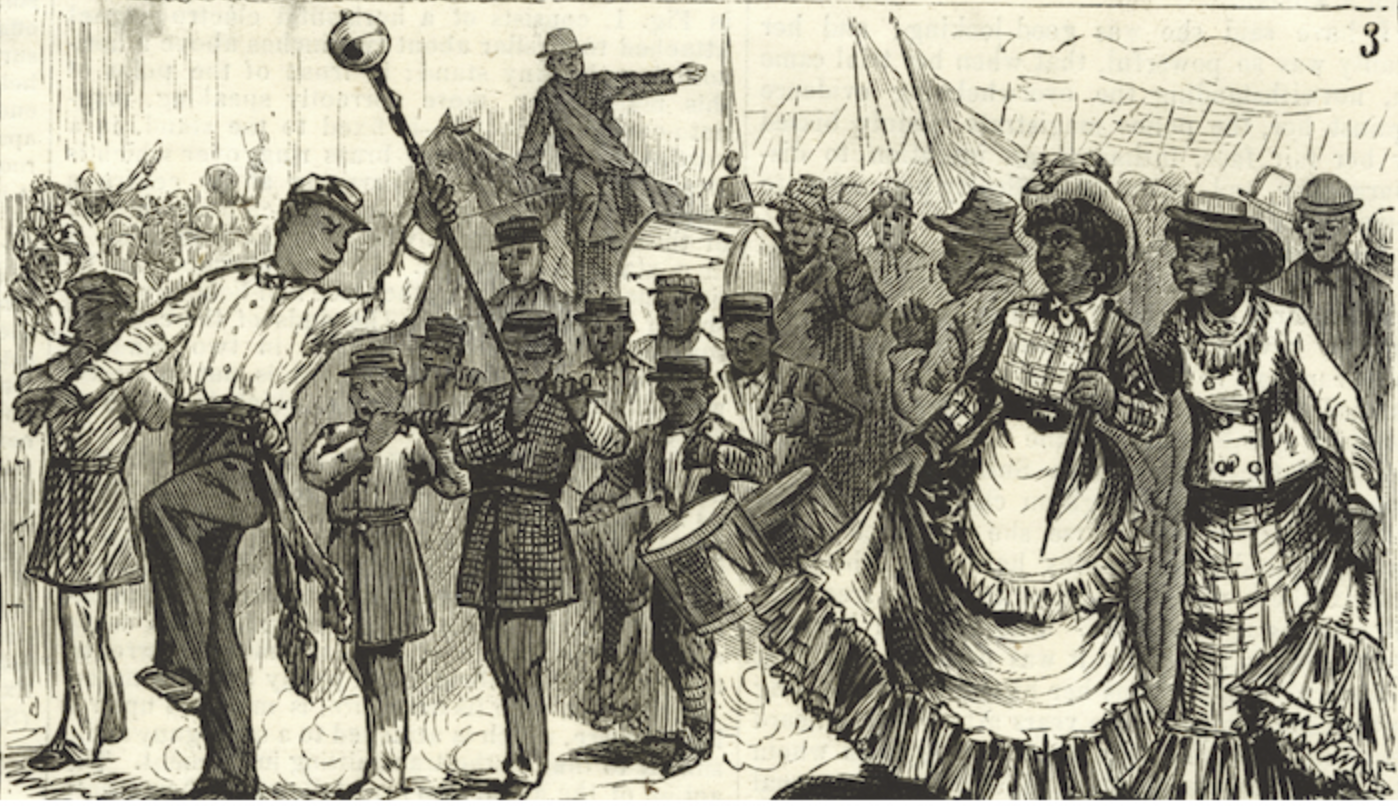
Signs like "Colored Waiting Room" served as constant reminders of the enforced racial segregation and systemic inequality. Source: Library of Congress

Drum Corps in Charleston's Emancipation Parade, from Frank Leslie's Newspaper, 10 February 1877
After the Civil War-1861-1865-the 13th Amendment abolished slavery in the United States, but systemic racism continued. The freed African Americans faced discriminatory Black Codes and violence from groups like the Ku Klux Klan, suppressing the security of equality. Reconstruction brought brief progress: the 14th and 15th Amendments granted citizenship and voting rights, but they were subsequently undermined by Jim Crow laws.
" All passenger stations in this state operated by any motor transportation company shall have separate waiting rooms or space and separate ticket windows for the white and colored races."
The Alabama Law, enacted in 1945

Signs like "Colored Waiting Room" served as constant reminders of the enforced racial segregation and systemic inequality. Source: Library of Congress
In the late 19th and early 20th centuries, segregation laws imposed a racial separation. Laws reinforced systemic inequality, creating barriers to social and economic mobility for nearly a century by segregating African Americans and White Americans. African Americans were denied quality education, jobs, and public facilities.
The decision in the case of Plessy v. Ferguson (1896) by the Supreme Court upheld "separate but equal", institutionalized racial inequality, fomenting decades of discrimination.
During World War II(1939~1945), black soldiers faced segregation in the military, though their service inspired efforts to promote equality.
The Double V Campaign occurred in the context of World War II, which called for victory over discrimination at home, thus setting the stage for post-war Civil Rights activism.
Description of the Double V Campaign by Black History in Two Minutes or so